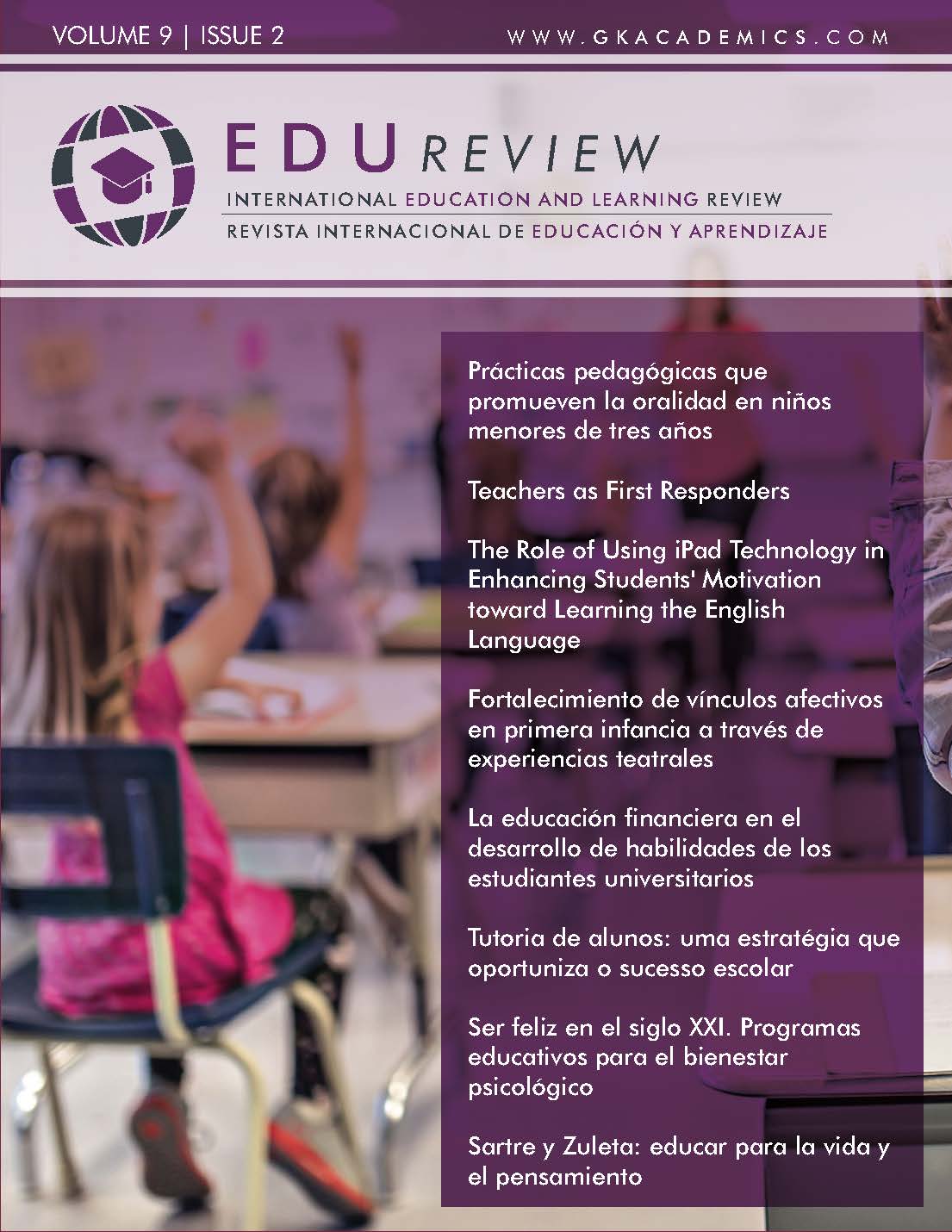Teachers as First Responders
What Teachers Do to Help Migrant Children and Their Families Deal with the Trauma They Experience
DOI:
https://doi.org/10.37467/gka-revedu.v9.2811Palabras clave:
Migrant, Refugee, Toxic trauma, Toxic stress, Teacher stories, Narrative researchResumen
While there is much in the press about refugee and migrant children’s movements around the world and their status in the countries where they ultimately (or even temporarily) settle, how these children experience schooling and education is critical in mitigating the effects of the trauma they experience in their home countries, in the process of leaving their home communities or countries, in traveling to their new communities and countries and getting settled in those new communities and countries. This paper presents the stories of three teachers who work with migrant children in the United States Midwest. Interviews with these teachers show that they actively work to mitigate the trauma the migrant children have experienced by creating classrooms that welcome the children and their families, help them to have a sense of belonging in their schools and communities, and help the children develop feelings of confidence and competence, critical to overcoming toxic stress.
Descargas
Estadísticas globales ℹ️
|
442
Visualizaciones
|
437
Descargas
|
|
879
Total
|
|
Citas
Adverse Childhood Experiences Study (ACES). (2020). Retrieved from: www.cdc.gov/violenceprevention/aces
Bruner, J. S. (2002). Making stories: Law, literature, life. New York: Farrar, Straus and Giroux.
Bruner, J. S. (1961). The act of discovery. Harvard Educational Review, 31, 21–32.
Gonzalez, E., Jr. (2020). Migrant farm workers: Our nation’s invisible population. Diversity, Equity, Inclusion Community of Practice (COPDEI), Purdue University, Lafayette, IN.
International Labour Organization (ILO). (2021). Statistics on international labour migration. www.ilo.org/global/topics/labour-migration/policy-areas/...
Lingard, L., Albert, M., & Levinson, W. (2008). Grounded theory, mixed methods, and action research. BMJ, 337, 459-461.
Maxwell, J. A. (2005). Qualitative research design: An interactive approach (2nd ed.). Thousand Oaks, CA: Sage.
NCTSN. National Child Traumatic Stress Network. www.nctsn.org
Paulsen, G. (2005). The crossing. New York, NY: Scholastic.
Rosales, X. (nd). Toxic Stress. Immokalee, FL: Center for Child Stress and Health. Retrieved from med.fsu.edu/childStress
United Nations Refugee Agency (UNHCR). (2019). Global Trends. unhcr.org.
US Department of Education. (1966). Title I. Part C—Education of Migratory Children. Washington, DC: United States Department of Education.
Zemelman, S. (2013). Teachers’ stories need to be heard. The Chicago Reporter, March 4, 2013. Retrieved from www.chicagoreporter.com
Descargas
Publicado
Cómo citar
Número
Sección
Licencia
Los autores/as que publiquen en esta revista aceptan las siguientes condiciones:
- Los autores/as conservan los derechos de autor.
- Los autores/as ceden a la revista el derecho de la primera publicación. La revista también posee los derechos de edición.
- Todos los contenidos publicados se regulan mediante una Licencia Atribución/Reconocimiento-SinDerivados 4.0 Internacional. Acceda a la versión informativa y texto legal de la licencia. En virtud de ello, se permite a terceros utilizar lo publicado siempre que mencionen la autoría del trabajo y a la primera publicación en esta revista. Si transforma el material, no podrá distribuir el trabajo modificado.
- Los autores/as pueden realizar otros acuerdos contractuales independientes y adicionales para la distribución no exclusiva de la versión del artículo publicado en esta revista (p. ej., incluirlo en un repositorio institucional o publicarlo en un libro) siempre que indiquen claramente que el trabajo se publicó por primera vez en esta revista.
- Se permite y recomienda a los autores/as a publicar su trabajo en Internet (por ejemplo en páginas institucionales o personales), una vez publicado en la revista y citando a la misma ya que puede conducir a intercambios productivos y a una mayor y más rápida difusión del trabajo publicado (vea The Effect of Open Access).













